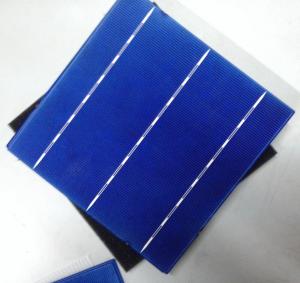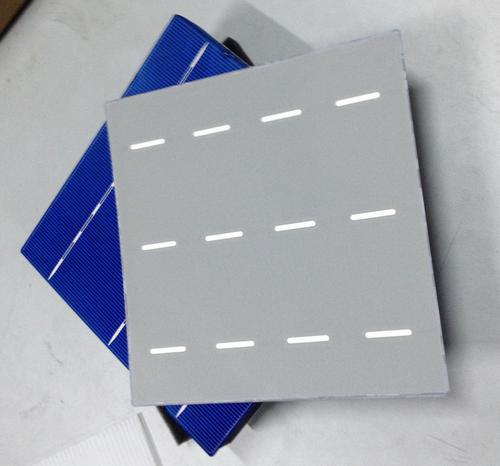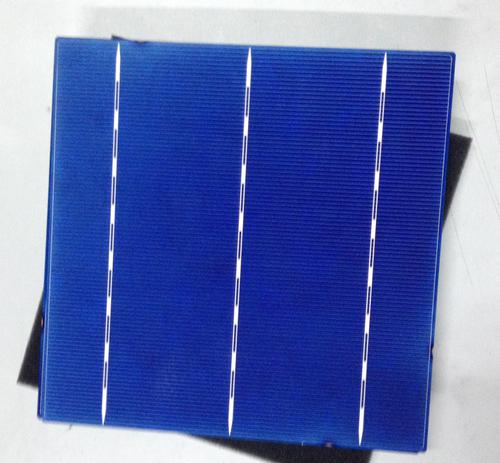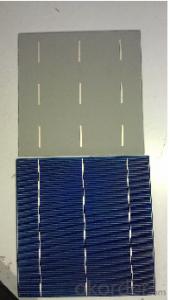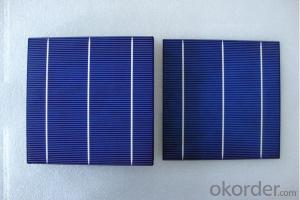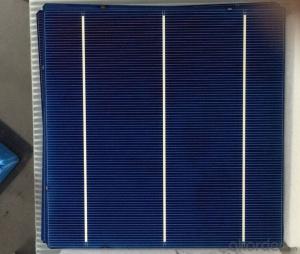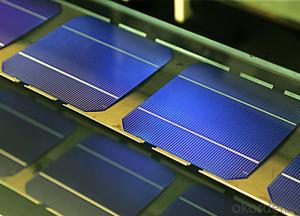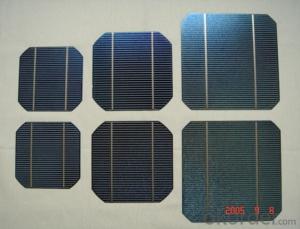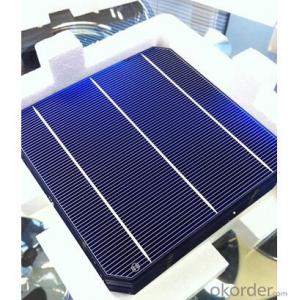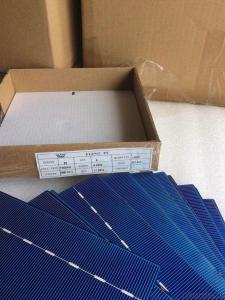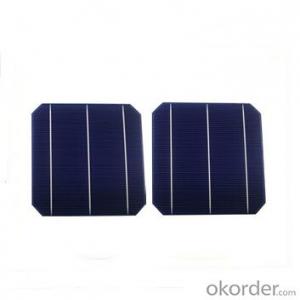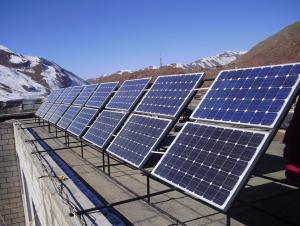Purchase Solar Cells Bulk - World-Beating 25-Year Life, 17.6% Efficiency
- Loading Port:
- Shanghai
- Payment Terms:
- TT OR LC
- Min Order Qty:
- 1000 pc
- Supply Capability:
- 5000000 pc/month
OKorder Service Pledge
OKorder Financial Service
You Might Also Like
Brief Introduction of Solar Cells
A solar cell, is an electrical device that converts the energy of light directly into electricity by the photovoltaic effect, which is a physical and chemical phenomenon. It is a form of photoelectric cell, defined as a device whose electrical characteristics, such as current, voltage, or resistance, vary when exposed to light. Solar cells are the building blocks of photovoltaic modules, otherwise known as solar panels.
Introduction of our Company
Our core business is the design and manufacture of III-V epitaxial material used in cellular phones and other wireless devices, and the design and manufacture of solar cells and solar sheets for a variety of applications, including unmanned aerial vehicles (UAVs), spacecraft, and terrestrial collectors.
Founded in 2000, we are well equipped to conduct its business. The company occupies a 30,000 square foot facility in Niles, a northern suburb of Chicago, Illinois. The facility contains a clean room and device fabrication and test laboratory. We own all the tools and equipment necessary to grow, fabricate, and test epitaxial material and solar cells and sheets. The company owns a set of metalorganic chemical vapor deposition (MOCVD) tools capable of high volume production. We also possess the tools and equipment required to fabricate and test semiconductor device structures and solar cells.
We are dedicated to producing quality products to meet customer needs. We are an ISO 9001-certified company. Production begins only after we are sure that all required customer specifications have been met. In order to ensure the quality of our products, we employ sophisticated quality control processes.
We prides itself on the quality of its employees. Some members of our technical staff are among the world’s foremost experts in the growth and processing of GaAs- and InP-based electronic devices and solar cells. Our staff supports customers, not only during the product development period, but also during production in order to enable continuing improvements in final product performance and yield.
We also performs contract research and development. Since 2003, we have been a prime federal contractor on more than thirty programs to develop solar cells, transistors, and lasers. A key result of this innovation has been the development of the epitaxial lift-off (ELO) process, which uses in its line of solar cell and solar sheet products. We have also supported other companies in the performance of their research and development programs. Many of the innovations developed at our have been incorporated into commercial products.
Specifications of Polycrystalline Solar Cells
Format : 156 mm × 156 mm ± 0.5 mm
Thickness: 210 μm ±40 μm
Front (-) : 1.5mm bus bars (silver),blue anti-reflection coating (silicon nitride)
Back (+) : 2.5mm wide soldering pads (silver) back surface field (aluminium)
Efficiency (%) | Pmpp (W) | Umpp (V) | Impp (A) | Voc (V) | Isc (A) |
18.00% | 4.38 | 0.528 | 8.291 | 0.631 | 8.869 |
17.80% | 4.33 | 0.525 | 8.252 | 0.629 | 8.821 |
17.60% | 4.29 | 0.532 | 8.053 | 0.633 | 8.541 |
17.40% | 4.23 | 0.528 | 8.092 | 0.624 | 8.632 |
17.20% | 4.19 | 0.524 | 7.992 | 0.62 | 8.458 |
17.00% | 4.14 | 0.52 | 7.972 | 0.623 | 8.5 |
Advantage of Polycrystalline Solar Cells
1. Tire-1 Solar Cells’ Manufacturer Quality Guarantee. With a complete and sophisticated quality government system, our Quality Management have arrived world’s leading place. Customer can receive Tire-1 Cells Maker’s Quality Standard Products.
2. Trusted Warranty. We can supply trusted after-sales service to our customer. If our cells are found not in conformity to the specification of manufacturer, or should the inspected quantity found in shortage, or should the packing found damaged, the buyer has the right to claim to the seller. The claim, if any, should be presented to seller within 30 days after cargo's arrival date to the port, together with related inspection report and photos issued and provided by a reputable independent surveyor such as SGS.
3. World’s Leading Manufacturer Equipment. We imported the newest and leading production equipment from abroad. Advanced equipment can guarantee the stable quality of cells. Auto production line can also save labor cost which will further cut our production cost.
4. Bulk supply: With the production capacity of 500MW, we can produce large quantity every month. This can satisfy most customer requirement.
Usage of Polycrystalline Solar Cells
Solar cells are often electrically connected and encapsulated as a module. Photovoltaic modules often have a sheet of glass on the front (sun up) side, allowing light to pass while protecting the semiconductor wafers from abrasion and impact due to wind-driven debris, rain, hail, etc. Solar cells are also usually connected in series in modules, creating an additive voltage. Connecting cells in parallel will yield a higher current; our solar cells have passed IEC Certification. With high and stable quality, our cells can greatly improve the performance of Solar Modules.
Applications of Polycrystalline Solar Cells
Assemblies of photovoltaic cells are used to make solar modules which generate electrical power from sunlight, as distinguished from a "solar module" or "solar panel". A solar array generates solar power using solar energy.
Packaging & Delivery of Polycrystalline Solar Cells
Carton Box Package and Deliver by air. It should be noticed that it should be avoid of water, sunshine and moist.
Factory Picture of Solar Cells
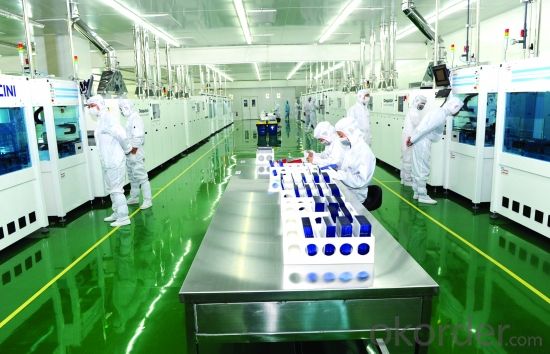
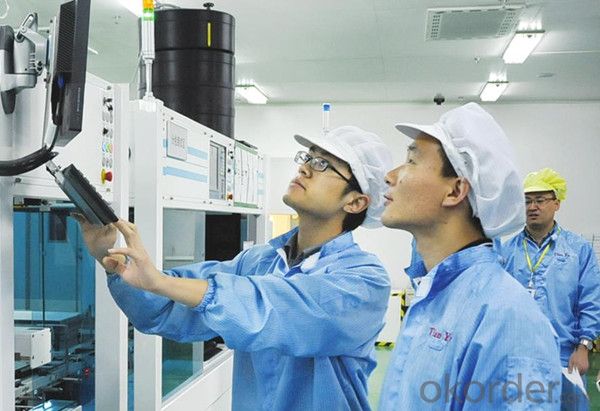
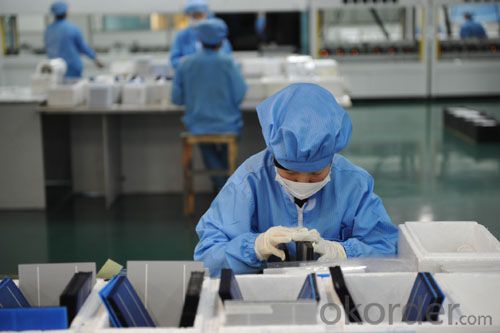
Package Picture of Solar Cells
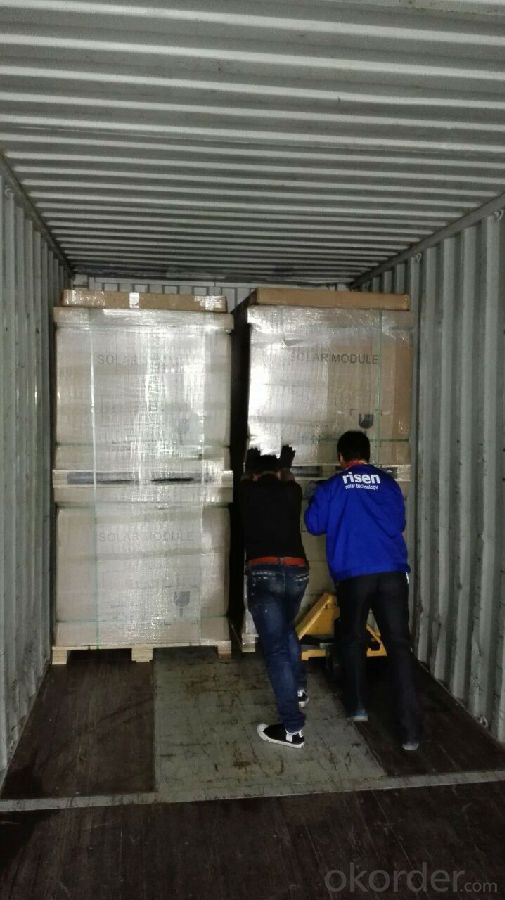
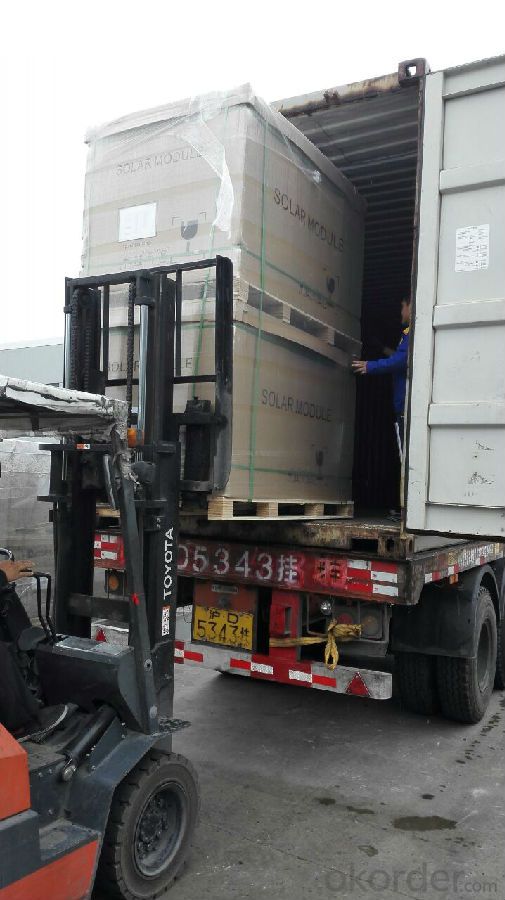
FAQ
We have organized several common questions for our clients,may help you sincerely:
1. What’s price per watt?
A: It’s depends on the quantity, delivery date and payment terms of the order. We can talk further about the detail price issue. Our products is high quality with lower price level.
2. Can you tell me the parameter of your solar cells?
We have different series of cells with different power output, both from c-si to a-si. Please take our specification sheet for your reference.
3. How do you pack your products?
We have rich experience on how to pack the panels to make sure the safety on shipment when it arrives at the destination.
4. Can you do OEM for us?
Yes, we can.
5. How long can we receive the product after purchase?
In the purchase of product within three working days, We will arrange the factory delivery as soon as possible. The perfect time of receiving is related to the state and position of customers. Commonly 7 to 10 working days can be served.
- Q: How do solar cells compare to fossil fuel-based power generation?
- Solar cells are a more sustainable and environmentally friendly alternative to fossil fuel-based power generation. Solar cells harness the power of sunlight, a renewable energy source, to generate electricity, while fossil fuel-based power generation relies on the burning of finite fossil fuels like coal, oil, and gas. Solar cells produce clean energy, emit no greenhouse gases, and have little to no impact on climate change. Additionally, while fossil fuel-based power generation requires constant extraction and transportation of fuels, solar cells can be installed in various locations, making them more versatile and accessible. However, solar cells are currently less efficient and more expensive than fossil fuel-based power generation, which hinders their widespread adoption.
- Q: What materials are commonly used in solar cells?
- Some common materials used in solar cells include silicon, cadmium telluride, and copper indium gallium selenide.
- Q: On the parallel connection of solar cells
- Whether you say more than one solar cell is in series or parallel, it depends on your use requirements to decide if the parameters of solar cells are basically the same, and you need a relatively high "use" voltage, that can The battery in series, if you need a larger operating current and the voltage does not need high, you can connect multiple solar cells in parallel to get a higher output current;
- Q: How do solar cells affect the electricity grid?
- Solar cells affect the electricity grid by injecting clean and renewable energy into the system. When solar cells generate excess electricity, it can be fed back into the grid, reducing the demand for electricity from traditional power plants. This helps diversify the energy sources and reduce carbon emissions. However, the intermittent nature of solar power can pose challenges to grid stability and require additional infrastructure investments for efficient integration.
- Q: Can solar cells be used for powering data centers?
- Yes, solar cells can be used for powering data centers. Solar energy can be harnessed and converted into electricity through solar cells, which can then be used to power the energy-intensive operations of data centers. This renewable energy source can help reduce the environmental impact of data centers by decreasing their reliance on fossil fuels and mitigating carbon emissions. However, the feasibility of using solar cells for data centers depends on factors such as the availability of sunlight, the size of the data center, and the energy requirements of the facility.
- Q: Can solar cells store energy for later use?
- No, solar cells cannot directly store energy for later use. They can only convert sunlight into electricity in real-time. However, the generated electricity can be stored in batteries or other energy storage systems for later use.
- Q: Do solar cells require maintenance?
- Yes, solar cells do require some maintenance. Regular cleaning of the solar panels to remove dust, debris, or any shading objects is necessary to ensure optimal sunlight absorption. Additionally, occasional inspection and maintenance of the electrical connections, inverters, and batteries (if present) may be required to ensure efficient and uninterrupted operation.
- Q: Is the Photovoltaic cell panel good to save the energy?
- The Photovoltaic cell panel is actually very much developed for saving the energy. After several years of research and development, the third generation solar cells (including various semiconducting properties at the molecular level of the material) has already being used.
- Q: Can solar cells be used in desalination plants?
- Yes, solar cells can be used in desalination plants. Solar energy can be harnessed to power the desalination process, either directly or indirectly. Direct methods involve using solar panels to generate electricity to power the desalination process, while indirect methods involve using solar thermal energy to heat the water and drive the desalination process. Both methods have been successfully implemented in various desalination plants around the world, offering a sustainable and environmentally-friendly solution to produce fresh water.
- Q: Can solar cells be used in extreme climates?
- Yes, solar cells can be used in extreme climates. Solar panels are designed to withstand a wide range of weather conditions, including extreme heat, cold, humidity, and even harsh environments like deserts or arctic regions. However, the performance of solar cells might be affected by extreme temperatures or limited sunlight in certain climates, so proper planning and adaptation may be required to optimize their efficiency in those conditions.
Send your message to us
Purchase Solar Cells Bulk - World-Beating 25-Year Life, 17.6% Efficiency
- Loading Port:
- Shanghai
- Payment Terms:
- TT OR LC
- Min Order Qty:
- 1000 pc
- Supply Capability:
- 5000000 pc/month
OKorder Service Pledge
OKorder Financial Service
Similar products
Hot products
Hot Searches
Related keywords


